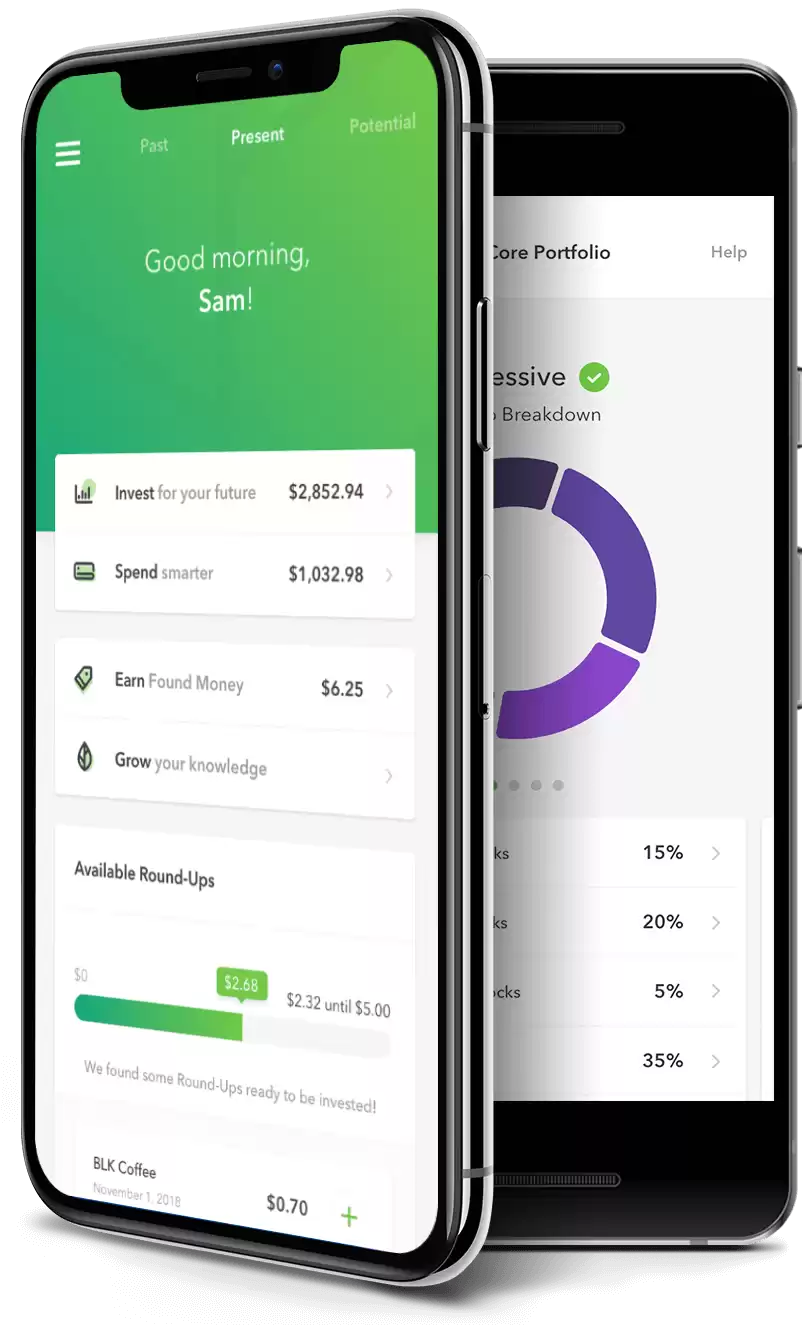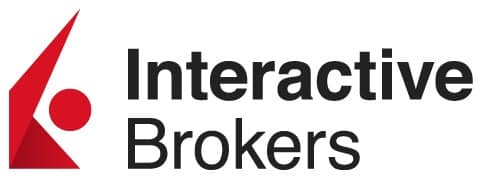Looking to learn how to start investing for beginners without getting a headache?
We compiled a stock market guide on investing for beginners.
Your money matters, so it's important to make smart investments.
With the internet being so easily accessible now it is no wonder that many people are turning to make money online by investing or to prepare for retirement.
In this article, we will go over how to start investing online for beginners.
What is Investing?
There are dozens of online brokers that allow you to trade online with ease, and track your investments from either your desktop or mobile or tablet apps. But despite the actual mechanics of it being simple, there is still a lot to learn for a complete beginner when it comes to investing online.
Why Should I Invest?
Saving money from your paycheck each week is not going to make you wealthy. This is due to inflation which affects us all and erodes the value of your money. In order to beat inflation, you can invest your money. |
When Should I Start Investing?
Yesterday. We all heard the old saying “Make your money work for you” right? Investing can sound tough if you don’t have a lot of money lying around. But investing can be for everyone — even if you only have spare change.
Starting Small is Okay
Not everyone will have thousands of dollars to invest, especially when it’s their first time. But it's worth noting that there are a lot of investors who started small, and with patience and persistence, managed to grow their portfolio significantly.
This is because when it comes to investments, although the amount is definitely a factor, what matters more is how early you start. If you start investing now, no matter how small, you’ll have more time to learn and grow.
In the process, your true, bigger investment is yourself. By understanding both the basics and the complexities of making an investment, including learning from your mistakes along the way, you’re also accumulating experience and acquiring knowledge that will both be useful in your journey to build your wealth steadily.
If you’re scared to make the first step, you’re not alone. This is in fact quite a common hurdle among beginners. The good thing is there are plenty of beginner–friendly options out there that you can start with a small investment.
There are apps available that offer the facility to ‘round-up’ your purchases – that is, save the remaining few cents to make up a dollar on your card purchases – and invest them for you.
Taking little to no commissions and acting as a type of fund manager, these investing apps allow you to customize the level of risk you want to engage with. Essentially an investment piggy bank, they provide a way to literally turn your pocket shrapnel into sustainable investments, little by little.
One of the most popular apps that do this round up is Acorns (they are also offering a $10 sign up bonus here).
There is no minimum amount required to open an Acorns account, but to begin investing, saving for retirement, or banking smarter, you must have funds in your account. Acorns starts at $3 a month for an investment account plus an IRA and a checking account.
If you are interested in investing your spare change, I recommend you learn more from Acorns here.
With Acorns, automatically invest spare change from everyday purchases in expert-built portfolios recommended for you, easily save for retirement, get paid early, and more. Start in under 5 minutes and get a $20 bonus today!
Investing 101: Basic Investing Terms
What is a Stock?
|
What is a Bond?
|
What is a Portfolio?Portfolio (finance), a collection of assets held by an institution or a private individual. Wikipedia This can mean your assets across real estate, art, and all other investment types not just stocks. |
What are Mutual Funds?You can be risk-averse with your investment capital (even if it's small) and consider investing in mutual funds. These allow you to invest in a professionally managed investment fund that pools money from many investors to purchase securities. This is a safer method of investing, as you’ll be part of a group of shareholders overseen by an expert rather than going it alone. As with anything, the first rule is to be safe and happy, and mutual funds help with that. |
What are ETFsThese trade on the stock exchange and compromise of more than one stock. They also comprise of foreign assets, futures, and bonds. With ETFs, you can trade an entire market with just one fund. ETFs are better than Mutual Funds for the small investor because they do not require a large amount of money. Exchange Traded Funds are another straight and narrow investment method. Depending on which broker you choose, you can choose between high risk or low-risk investments, lump sums or a series of regular monthly investments. Also, you can even keep track of your performance daily. In the end, there’s a bit more flexibility here, as well as something of a safety net in case things go wrong. In the end, ETFs are used as safe investment vehicles and are a good way to invest small and large sums of money. |
What are Dividend Stocks?There are companies whose performance on the stock market is consistently good. These companies offer dividends to their shareholders. You can start small by buying just one stock and reinvesting the dividend you earn to buy more. This is a brilliant way to build your investment portfolio without crippling your bank account. |
What are Robo Advisors?Robo advisors are online investing platforms that can help you build your investment portfolio at a small fee. You are provided with an online questionnaire to fill out to determine your risk tolerance. There are no minimum deposit requirements. Once you make a commitment to fund your account with a certain amount of money every month, you are all set to go. The platform charges a small annual management fee for maintaining your account. This fee reduces as your account grows. |
Where to Focus First
Start taking advantage of the concept of compounding interest and watch your money grow.
Investment is a big and scary word for a lot of people, especially Millennials.
It essentially boils down to swapping out a chunk of your money for a bigger piece of a pie later down the line, while funding the ideas and pursuits you believe in.
Of course, there’s a big risk factor involved, and your investments don’t always wind up being so simple and great at the end of the process.
The fact is if you’re going to need small investment opportunities that are safe and smart, especially if you don’t have much money to part ways with.
How can you do it?
You should first take some time to learn the different types of investments. Stocks and shares may be something you have heard that usually does the rounds and is used as a generic term to cover all investments, but there are many different types.
Not only are there different types of investment, but there are also a lot of different ways they are packaged, like ISA's and retirement funds.
The best way to start looking at the fundamentals of what you are going to invest in is to take into consideration the following:
- How much time you can give your investment. Do you want a quick return or are you going the play the long game?
- How much money you have to invest. A lot? A lump sum or are you going to invest in increments over time?
- How much risk are you willing to take?
- How well do you know the markets?
7 Steps for Investing Money
Here are some golden rules that anyone learning about investing for beginners should take. This investing guide for beginners will help you understand the basics behind investing in the stock market.
Step 1: Select an Investment Strategy
Before you start investing you need to learn about markets and understand different investing strategies. Investing is a way of building wealth, but anyone can learn how to invest. Investing for beginners is a complex topic, but I will explain it fool-proof way.
There are various vehicles that make it easy to invest even with small amounts of money such as AllyInvest which has no account minimum and low stock trading fees. You should understand that investing is different than gambling, investing is not a get rich quick scheme.
The odds of making money are greatly stacked against most individual investors so getting familiar with different profitable strategies is important.
Perhaps you choose to focus on timeless methods like:
- Value Investing: Value investing (buying underpriced stocks) is an investment strategy where stocks are selected that trade for less than their intrinsic values. Value investors actively seek stocks they believe the market has undervalued. Investors who use this strategy believe the market overreacts to good and bad news, resulting in stock price movements that do not correspond with a company's long-term fundamentals, giving an opportunity to profit when the price is deflated.
- Dollar-Cost Averaging (DCA): Dollar-cost averaging is an investment technique of buying a fixed dollar amount of a particular investment on a regular schedule, regardless of the share price. The investor purchases more shares when prices are low and fewer shares when prices are high. The premise is that DCA lowers the average share cost over time, increasing the opportunity to profit. The DCA technique does not guarantee that an investor won't lose money on investments. Rather, it is meant to allow investment over time instead of investment as a lump sum.
These are proven methods used to grow your wealth.
The Little Book Investing Series is a good place to get a basic understanding of different strategies. For example, The Little Book of Value Investing and The Little Book of Common Sense Investing are two options that touch on both value investing, dollar cost indexing, and passive indexing.
During his youth, Billionaire investor Warren Buffett took his investment education so seriously that he read every book on investing at the Omaha public library, some of them twice.
As you continue to learn about a particular method, you will develop your expertise in that area. Once you have learned enough you will begin to find an investment style that makes the most sense to you.
No matter what style works for you, each particular investment strategy will establish a prescribed plan for you to put into practice for years to come.
Step 2: Decide on Your Asset Allocation Mix
Your asset allocation is simply the desired mix of holdings in your portfolio.
Think of your account as a pie with each slice of that pie representing a different asset in your account.
The percentage of stocks, bonds, and other holdings in your portfolio should be decided upon based on the recommendations from your readings.
For example, a classic 60% stocks and 40% bonds allocation is a useful template for most people. With this example allocation, you will get growth opportunities from your stock holdings, as well as interest income plus potentially smaller overall account declines due to the more conservative bond allocation.
Step 3: Choose a Product
The next step in this investing for beginners guide is learning about how to choose what products to invest in. Now that you have decided on a mix of assets for your portfolio you can begin selecting investment products.
For investors willing to accept the company-specific risk, investing in individual stocks and bonds will provide adequate exposure.
Alternatively, Exchange Traded Funds (ETF’s) can provide better diversification for an individual investor. This means that your portfolio will be subjected mostly to market risk. That is, the risk of having an individual stock holding in your portfolio decline by a large amount and create a significant loss for your whole account is minimized.
All things being considered, most individual investors are usually best-served by investing in stock and bond ETF’s for simplicity and ease of transaction. ETF’s represent the ownership of a basket of securities like the holdings in the Dow Jones Industrial Average and can be bought and sold throughout the day just like a stock.
Today, most ETF fund companies, like iShares or Vanguard, offer ETF products that provide ample exposure to the stock or bond market with options for customization too.
Step 4: Decide How Much to Invest
The next step in this investing for beginners guide is to determine how much money you want to use to fund your account. This value needs to be a number you are comfortable with having invested.
During a full market cycle, you will need to be able to mentally handle the periods when your account is down.
The stock market will routinely experience declines of 10% to 20%. Determine what dollar value will cause you to experience “sticker shock” when you look at your account statement and that value can be set as your 20% downside threshold. Then, calculate the total account value by dividing that dollar value by 20%.
For example, if a $2,000 account decline is the most you can financially or mentally tolerate divide that value by 20% and you could fund your account with up to $10,000.
Putting money to work in the markets is very different than keeping it in a savings account. You will experience daily fluctuations in your account balance that could be sizable.
Also, investing does not produce stable returns like a savings account that pays monthly interest.
However, for bearing this additional risk by putting your money in the market you will assume a higher rate of return over a long period of time. It's all a part learning your risk tolerance when investing for beginners.
Step 5: Pick a Trading Platform
The next step in learning how to start investing is learning about how to pick a trading platform or brokerage. This trading platform will be where you buy and sell assets for your account, transfer cash, read market research, and handle other administrative issues.
Selecting a full-service discount online broker like E-Trade, Ally Invest, Scottrade, or Charles Schwab will be fine for most investors. Take some time to familiarize yourself with account fees and balance requirements for different brokers before making your choice as these can vary slightly and costs add up over time. You can also opt smarter automated investing service with M1 Finance which aims to provide optimized investment returns for individual, IRA, 401k, and rollover accounts
Overall, if you ever have an issue with your account or have any questions about using the online technology these firms have well-trained employees that are available to assist with your questions.
- No fees on any of your investments
- Choose from over 80 pre-built portfolios
- Low $100 minimum investment amount
Step 6: Define Your Time Horizon
Establishing a time horizon for your investments will keep you on course to meet your goals.
If your goal is to accumulate money for a large purchase or create an additional income source in a few years then that needs to be your focus. Checking your account balance several times a day will not help you reach your goal any faster.
In fact, research has actually shown that the more decisions investors make the lower their returns and ultimately their account balances. Frequent monitoring will lead to excessive trading which will increase transaction costs, fees, and diminish the ability for your account to compound over a long period of time.
As a result, you will be further from reaching your investment goal and need more time to invest which may put a strain on your finances elsewhere or at the very least postpone your large purchase.
Step 7: Monitor Your Investments
While checking your account too frequently is not advised, you will need to monitor your investments periodically – especially when the market is down. Don’t ignore your statements when you know your account balance has declined along with the market just because it is painful to see that you have less money.
Those are the times when you need to manage risk by comparing your performance to a benchmark like the Standard & Poor’s 500 Index to see if the decline in your account is relatively the same or if there is really a cause for concern.
Monitoring your investments will involve checking your account balance on a pre-specified timeframe as determined during the research process. For example, some strategies advise reviewing your account statement and asset allocation at the end of every month or quarter to determine if changes are necessary.
How to Start Investing Today
Choosing an online broker is one of the most important steps in starting online trading. Finding a good online trading broker can be a partnership that lasts many years and earns you lots of money. Again, if you are playing the long game you really need to think this through and try not to be dazzled by sign up bonuses or gimmicks just to get you through the door. There are a lot of things to consider including:
- Who underwrites the online broker? Is it a reputable company?
- Do they give good rates on your preferred instrument or type of investment? Some online brokers may trade in the investment you want to trade in, but not the actual stock itself or fund
- If there are any bonus offers, what do you have to do to be able to use these?
Speak to an Adviser
Even if you are going to invest online, this doesn't necessarily mean that you do not have to speak to a financial adviser. If you are really not sure, you can still consult with them and get advice on what works best for you. You do not need to use them to actually execute the trades.
Stay Realistic
You don't have to put in hours a day for online trading. For most, it is a little side hobby and a way into the markets without having to make big money investments. But what you do need to be realistic about is how much time you can spend online trading and when. If you cannot look at your phone for the whole day at when the markets are open, then you need to think about taking advantage of apps and websites that let you do automatic buy and sell commands on your investments.
If you can actually afford the time of going live each day, then you need to also remember how quickly the markets are. You could lose out on a good price by doing something as simple as sitting reading through a fund performance chart.
Stocks and shares trading are fast-paced, you really could miss out if you take your eye off of the ball for a few minutes. This is another thing to consider when you are picking your type of investment. Bonds and funds like unit trusts are a lot slower paced, and if you can't keep checking all the time they may be more of a benefit.
The Best Investing Books for Beginners
Here are some books that will help you get started, and thrive on your investment journey.
Rich Dad, Poor Dad — Robert Kiyosaki (2000)

This is a classic book, and is a must-read if you are looking to get into wise investments and investing for beginners. Kiyosaki differentiates the mentality of the poor and middle class, who just work for money and sacrifice their time, to the rich people, who work hard to learn new things and gain time in the process.
This book stresses the need for financial independence which is presented as the final goal, which needs to be achieved fast, in order to avoid the rat race of corporate life.
The problem with our educational system is that it teaches us that we need to work hard for the rest of our lives in order to live comfortably, which is a lie. What we really need to be doing in our schools and colleges is imparting financial skills that will help our young ones create wealth, and achieve financial independence.
The Essays of Warren Buffett: Lessons for Corporate America — Warren Buffett (1997)

This is a great book for those looking to learn how about investing for beginners. Warren Buffett is known the world over for being the ultimate guru on smart and profitable investments, and so it is naturally a good idea to read one of his books and take him at his word.
In the book he talks about finance, investing ideas, acquisitions, valuation of stocks, accounting, and also deals with tax issues.
As the successful chairman of Berkshire Hathaway, he draws on the experience of the company and brings out his basic business principles that have kept the company growing year on year. A must-read!
The Intelligent Investor — Benjamin Graham (1949)

This book has been called the “greatest book on investing ever written”, by none other than Warren Buffett, who is known as modern history’s greatest and most successful investor.
This book deals with the purchase of apparently undervalued stocks which possess greater inherent value, by following the process of fundamental analysis.
Benjamin Graham is known widely as “the father of value investing”. This book is a must-read if you are looking to deepen your knowledge of the stock market, and how to perform fundamental analysis to buy the best stocks. Hands-down a must-read if you are just learning about investing for beginners.
The Bottom Line on Investing for Beginners
A point to keep in mind – investing early is important, but investing wisely is much more important and therefore good learning and investment skills need to be developed. The easiest way to do that is by reading the best investing books written by authors who know their stuff when it comes to investment.
It's definitely possible to make money online by investing, good luck!

 When you put your money in the stock market, directly or through safer options like mutual funds and index funds, while the value of your portfolio will fluctuate, your average return will be higher than what other safer options can provide.
When you put your money in the stock market, directly or through safer options like mutual funds and index funds, while the value of your portfolio will fluctuate, your average return will be higher than what other safer options can provide.










